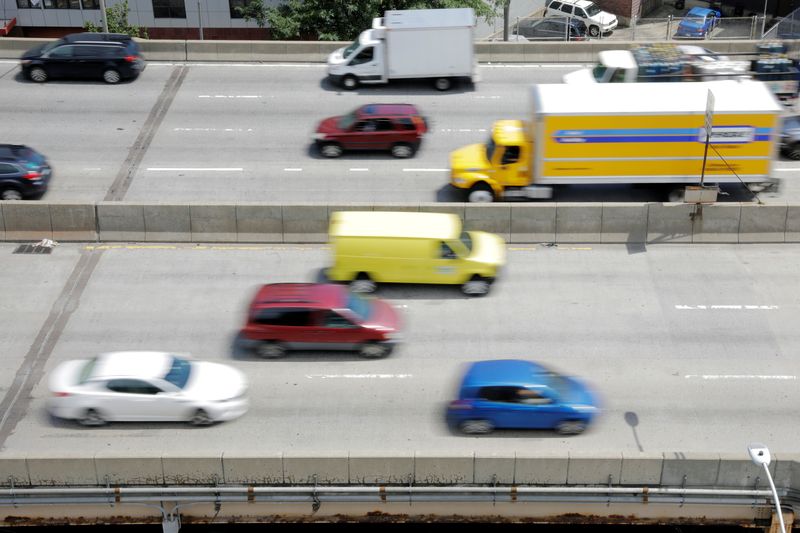By David Shepardson
WASHINGTON (Reuters) -The U.S. government said on Friday it was finalizing tighter tailpipe emissions standards for heavy duty vehicles like semi-trucks and buses, but the new rules would not be as strict as initially proposed in 2023.
The Environmental Protection Agency (EPA) said the new rules setting standards for the 2027 through 2032 model years will avoid 1 billion tons of greenhouse gas emissions through 2055 and provide $13 billion in annualized net benefits to society. In contrast, the EPA had said its tougher proposed rules last year would have prevented 1.8 billion tons of emissions.
The new standards apply to delivery trucks, garbage trucks, public utility trucks, transit, shuttle, and school buses and tractor-trailer trucks.
The final standards tighten requirements at a slower pace and delay the start of new rules for day cab tractors and some heavy-duty vocational vehicles, the EPA said.
Heavy duty vehicles account for 25% of all greenhouse gas emissions from the transportation sector, which accounts for 29% of U.S. greenhouse gas emissions.
The EPA said the standards "are technology-neutral and performance-based, allowing each manufacturer to choose what set of emissions control technologies is best suited for them and the needs of their customers."
The final rule includes lower electric vehicle projected sales rates for model years 2027-2029 than the original proposed rule would have required. But an industry group argued the rule was still too strict.
The Truck and Engine Manufacturers Association, which represents Daimler (OTC:MBGAF) Truck; Volvo (OTC:VLVLY) Trucks, Cummins (NYSE:CMI) and others, said it was concerned "the final rule will end up being the most challenging, costly and potentially disruptive heavy-duty emissions rule in history."
The association added the new rules set a percentage of zero-emissions vehicles such as fuel cell-powered or electric vehicles that a company must sell, "which is beyond their own ability to control."
Tesla (NASDAQ:TSLA), some Democrats and environmental groups had urged the EPA to adopt even tougher rules.
Abigail Dillen, president of the Earthjustice environmental group, said Friday "the EPA did not go far enough to protect communities from dangerous health impacts linked to heavy-duty truck pollution" and added "truck manufacturers have pushed EPA to slow-walk this change."
The American Trucking Associations said targets beyond 2030 "remain entirely unachievable given the current state of zero-emission technology, the lack of charging infrastructure and restrictions on the power grid."
Current tailpipe emissions limits for heavy duty trucks and engines were set in 2016 covering the 2021 through 2027 model years.

The Sierra Club's Katherine García praised the new EPA rules adding "it’s crucial that truck manufacturers get into the fast lane with zero-emission trucks to deliver the climate, health, and economic benefits we deserve.”
Last week, the EPA finalized emissions rules for light and medium duty vehicles through 2032, cutting its target for U.S. electric vehicle adoption from 67% by 2032 to as little as 35%.